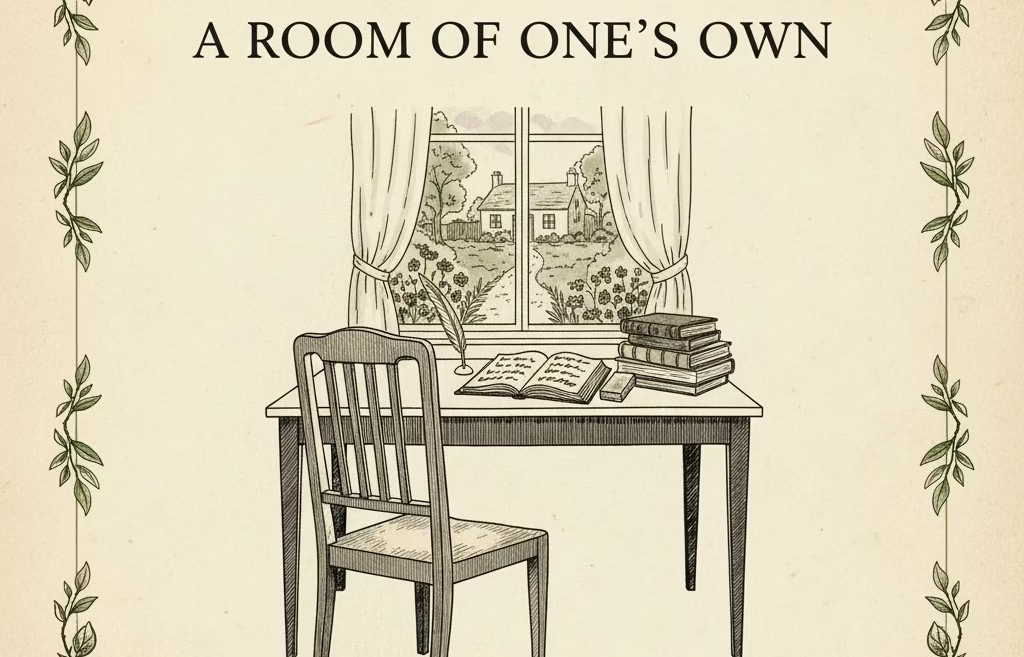Introduction
Tennessee Williams’ A Streetcar Named Desire stands as a pillar of American theatre, its influence spanning decades and continents. Since its 1947 debut, the play has captivated audiences with its raw emotional intensity, complex characters, and exploration of timeless themes. Whether you are a student, a literature enthusiast, or a theatre lover, understanding the intricate layers of this play can enrich your appreciation and insight. This article—A Streetcar Named Desire—delves into the play’s most significant themes, provides detailed character analyses, and plot overview. FULL TEXT
Setting the Scene: New Orleans in the 1940s
A Streetcar Named Desire is a drama in eleven scenes, set in the vibrant yet decaying French Quarter of New Orleans. The story follows Blanche DuBois, a once-wealthy Southern belle, as she seeks refuge with her sister, Stella, and brother-in-law, Stanley Kowalski. Blanche’s arrival sets off a chain of events that expose secrets, ignite passions, and ultimately lead to tragedy.
Williams’ play is renowned for its poetic dialogue, psychological depth, and unflinching portrayal of human frailty. The title itself is symbolic: Blanche’s journey on the streetcar named “Desire” is both literal and metaphorical, representing her pursuit of love, security, and meaning in a world that has left her behind.
A Streetcar Named Desire : Plot Summary
Setting the Scene
The play opens on a hot evening in New Orleans. Blanche DuBois arrives unexpectedly at the modest apartment of her sister Stella and Stella’s husband, Stanley Kowalski. Blanche, dressed in white and exuding an air of faded gentility, is visibly anxious and out of place in the bustling, working-class neighborhood.
Blanche’s Arrival
Blanche reveals to Stella that their ancestral home, Belle Reve, has been lost due to financial ruin and a string of family tragedies. She is evasive about the details, hinting at emotional distress and personal loss. Stella, deeply attached to her sister, welcomes Blanche but is torn between her loyalty to Blanche and her passionate relationship with Stanley.
Stanley’s Suspicion
Stanley, a proud and assertive man, is immediately suspicious of Blanche’s story. He believes she has cheated Stella out of her inheritance and is determined to uncover the truth. Stanley’s investigations reveal that Blanche’s life in Laurel, Mississippi, was marked by scandal and disgrace—she was dismissed from her teaching job for an inappropriate relationship and became notorious for her affairs.
The Tension Builds
As Stanley digs deeper, the tension in the apartment escalates. Blanche attempts to maintain her composure, flirting with Stanley’s friend Mitch and clinging to the hope of a new beginning. Mitch, lonely and kind-hearted, is drawn to Blanche’s vulnerability and sophistication.
The Poker Night
A pivotal scene occurs during Stanley’s poker night. The atmosphere is charged with masculinity and aggression. Stanley’s violent outburst, in which he strikes Stella, shocks Blanche and highlights the volatility of the Kowalski marriage. Stella, however, forgives Stanley, revealing the complex dynamic of power and desire in their relationship.
Blanche and Mitch
Blanche and Mitch’s relationship blossoms, offering Blanche a glimmer of hope for redemption. She confides in Mitch about her tragic marriage to a young man who died by suicide after she discovered his homosexuality. Mitch is sympathetic, and Blanche dreams of escaping her past through marriage.
Stanley’s Revelation
Stanley, relentless in his pursuit of the truth, exposes Blanche’s past to Mitch. Devastated, Mitch confronts Blanche, who pleads for understanding but is ultimately rejected. The revelation marks the beginning of Blanche’s psychological unraveling.
The Climax
The play reaches its harrowing climax when Stanley, drunk and enraged, confronts Blanche on the night Stella gives birth. In a moment of violence and dominance, Stanley assaults Blanche, shattering the last remnants of her sanity.
The Aftermath
Blanche’s mental state deteriorates rapidly. Stella, torn between her sister and her husband, chooses to believe Stanley’s version of events. The play ends with Blanche being taken away to a mental institution, her final words echoing her desperate need for kindness: “I have always depended on the kindness of strangers.”
Exploring the Main Characters
Blanche DuBois
Blanche is the play’s tragic heroine, a woman haunted by loss, guilt, and the relentless passage of time. Once a symbol of Southern grace and refinement, she is now destitute, emotionally fragile, and desperate for acceptance.
Background: Born into a wealthy family, Blanche witnessed the decline of Belle Reve and the deaths of her loved ones. Her marriage ended in tragedy, and her subsequent actions—seeking solace in fleeting relationships—led to her social ostracism.
Personality: Blanche is charming, articulate, and sensitive, but also manipulative and delusional. She constructs elaborate fantasies to shield herself from reality, often blurring the line between truth and illusion.
Symbolism: Blanche represents the fading Old South, clinging to ideals of beauty and gentility in a world that no longer values them.
Stanley Kowalski
Stanley is the embodiment of raw, working-class masculinity. He is fiercely proud, territorial, and unyielding.
Background: Of Polish descent, Stanley is a World War II veteran who works in a factory. He resents Blanche’s airs and is determined to assert his dominance in his home.
Personality: Stanley is direct, practical, and often aggressive. He values honesty and despises pretense, which puts him in direct conflict with Blanche.
Symbolism: Stanley represents the new, modern America—dynamic, diverse, and unapologetically forceful.
Stella Kowalski
Stella is the bridge between Blanche and Stanley, torn between her past and her present.
Background: Like Blanche, Stella grew up at Belle Reve but adapted to life in New Orleans. She is deeply in love with Stanley, despite his flaws.
Personality: Stella is nurturing, pragmatic, and resilient. She seeks harmony but is often forced to choose between loyalty to her sister and her husband.
Symbolism: Stella embodies compromise and survival, adapting to changing circumstances while trying to preserve family ties.
Harold “Mitch” Mitchell
Mitch is Stanley’s friend and Blanche’s would-be suitor.
Background: Mitch lives with his ailing mother and longs for companionship. He is more sensitive and gentle than Stanley.
Personality: Mitch is compassionate and earnest, but his insecurities make him susceptible to Stanley’s influence.
Symbolism: Mitch represents the possibility of redemption for Blanche, but his inability to defy social norms ultimately leads to disappointment.
Supporting Characters
Eunice and Steve: The Kowalskis’ neighbours, whose tumultuous relationship mirrors that of Stella and Stanley.
Pablo and the Poker Players: Friends of Stanley, contributing to the play’s masculine atmosphere.
The Young Collector: A fleeting symbol of Blanche’s longing for lost youth and innocence.
The Doctor and Matron: Figures of authority who remove Blanche in the final scene.
Major Thematic Analysis
Desire and Destruction
Desire is the driving force behind every character’s actions. Blanche’s pursuit of love and validation leads her to ruin, while Stanley’s desire for control and dominance fuels the play’s conflict. The streetcar named “Desire” is both a literal vehicle and a metaphor for the relentless, often destructive, pursuit of fulfillment.
Illusion vs. Reality
Blanche’s reliance on illusion is her primary coping mechanism. She dresses in white, avoids bright light, and tells fanciful stories to mask her pain. Stanley, by contrast, is a champion of harsh reality, exposing Blanche’s secrets and stripping away her defenses. The clash between illusion and reality is at the heart of the play’s tragedy.
Gender, Power, and Class
Williams explores the shifting dynamics of gender and class in postwar America. Blanche’s genteel upbringing is at odds with Stanley’s working-class ethos. The play interrogates traditional gender roles, highlighting the vulnerability of women and the dangers of unchecked masculinity.
Violence and Vulnerability
Violence—both physical and psychological—permeates the play. Stanley’s aggression is contrasted with Blanche’s fragility, creating a tense and volatile atmosphere. The play examines the consequences of violence and the ways in which vulnerability can be both a source of strength and a path to destruction.
The Decline of the Old South
Blanche’s fall mirrors the decline of the aristocratic South. Her inability to adapt to modern realities leads to her downfall, while Stanley’s triumph signals the rise of a new social order. The play mourns the loss of tradition but acknowledges the inevitability of change.
Light, Darkness, and Symbolism
Williams uses light and darkness as recurring motifs. Blanche avoids bright light, fearing exposure and the truth about her age and past. Shadows and dim lighting create an atmosphere of mystery and concealment, reflecting the characters’ inner turmoil.
Dramatic Structure and Style
Tennessee Williams organises A Streetcar Named Desire into eleven scenes, with each scene building tension and deepening character development. Williams employs naturalistic dialogue, poetic imagery, and symbolic stage directions to create a vivid and immersive theatrical experience.
Music and Sound: The recurring “blue piano” and the polka tune “Varsouviana” evoke the emotional landscape of New Orleans and Blanche’s haunted memories.
Stage Directions: Williams’ detailed stage directions guide actors and directors, emphasising mood, lighting, and physicality.
Language: The contrast between Blanche’s lyrical speech and Stanley’s bluntness underscores the play’s central conflicts. FOR FURTHER READING
Legacy and Cultural Impact
Since its premiere, A Streetcar Named Desire has become a staple of theater and literature curricula worldwide. The play’s exploration of desire, identity, and societal change continues to resonate with contemporary audiences.
Film and Adaptations: The 1951 film adaptation, starring Marlon Brando and Vivien Leigh, is considered a classic. Countless stage productions and reinterpretations have kept the play relevant.
Critical Reception: The play has been praised for its psychological depth, complex characters, and innovative use of symbolism.
Influence: Williams’ work paved the way for more honest and nuanced portrayals of sexuality, mental illness, and social change in American drama.
Conclusion
A Streetcar Named Desire endures as one of the most profound and compelling works in the canon of American literature and drama. Tennessee Williams’ masterful construction of character, atmosphere, and dialogue ensures that the play resonates with each new generation, inviting audiences and readers to confront uncomfortable truths about human nature and society.
At its core, the play is a meditation on the fragility of identity and the destructive power of desire. Blanche DuBois’s tragic journey from hope to despair highlights the peril of clinging to illusions in a world that demands harsh honesty. Her struggle to reconcile her past with her present, and her ultimate vulnerability, reflect universal fears about aging, loss, and the search for belonging. Stanley Kowalski, as her adversary, embodies the rise of a new social order—one that values strength, directness, and survival over tradition and sentimentality.
The enduring relevance of A Streetcar Named Desire lies in its fearless exploration of themes that remain urgent today: the complexities of gender and power, the consequences of violence, and the tension between reality and fantasy. Williams’ use of symbolism—light and darkness, music, and the titular streetcar—deepens the emotional impact, allowing audiences to experience the characters’ inner worlds as vividly as their outward actions.
Moreover, the play’s setting in the vibrant, multicultural landscape of New Orleans mirrors a society in transition, as people challenge old hierarchies and forge new identities. The interplay between Blanche’s fading aristocracy and Stanley’s working-class assertiveness mirrors broader cultural shifts, making the play as much a social commentary as a personal tragedy.
Frequently Asked Questions
What is the main message of the play?
The play examines the destructive power of desire, the dangers of living in denial, and the clash between old and new values. It highlights the vulnerability of individuals in a rapidly changing world.
Why is Blanche DuBois a tragic figure?
Blanche’s inability to reconcile her past with her present, her reliance on illusion, and her desperate search for love make her a classic tragic heroine. Her downfall is both inevitable and deeply moving.
How does Stanley Kowalski represent modern America?
Stanley’s assertiveness, pragmatism, and rejection of tradition embody the spirit of postwar America. He challenges established norms and asserts his place in a changing society.
What role does symbolism play in the play?
Williams uses symbols—such as the streetcar, light, and music—to convey characters’ emotions and themes. These elements add depth and resonance to the narrative.
How does the play address gender roles?
The play critiques traditional gender roles, exposing the limitations and dangers they impose. Stella and Blanche’s dependence on men, and Stanley’s assertion of dominance, reflect broader societal tensions.






1 Comment
[…] EXPLORE OTHER AUTHORS HERE […]